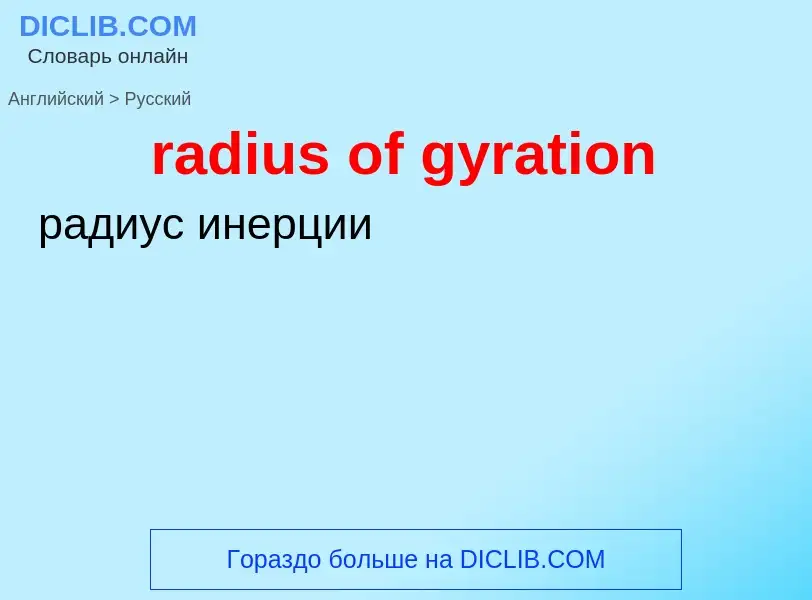Traduzione e analisi delle parole tramite l'intelligenza artificiale ChatGPT
In questa pagina puoi ottenere un'analisi dettagliata di una parola o frase, prodotta utilizzando la migliore tecnologia di intelligenza artificiale fino ad oggi:
- come viene usata la parola
- frequenza di utilizzo
- è usato più spesso nel discorso orale o scritto
- opzioni di traduzione delle parole
- esempi di utilizzo (varie frasi con traduzione)
- etimologia
radius of gyration - traduzione in russo
общая лексика
радиус инерции
Definizione
.
Wikipedia
Radius of gyration or gyradius of a body about the axis of rotation is defined as the radial distance to a point which would have a moment of inertia the same as the body's actual distribution of mass, if the total mass of the body were concentrated there.
Mathematically the radius of gyration is the root mean square distance of the object's parts from either its center of mass or a given axis, depending on the relevant application. It is actually the perpendicular distance from point mass to the axis of rotation. One can represent a trajectory of a moving point as a body. Then radius of gyration can be used to characterize the typical distance travelled by this point.
Suppose a body consists of particles each of mass . Let be their perpendicular distances from the axis of rotation. Then, the moment of inertia of the body about the axis of rotation is
If all the masses are the same (), then the moment of inertia is .
Since ( being the total mass of the body),
From the above equations, we have
Radius of gyration is the root mean square distance of particles from axis formula
Therefore, the radius of gyration of a body about a given axis may also be defined as the root mean square distance of the various particles of the body from the axis of rotation. It is also known as a measure of the way in which the mass of a rotating rigid body is distributed about its axis of rotation.

